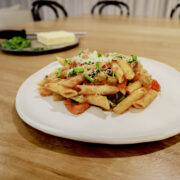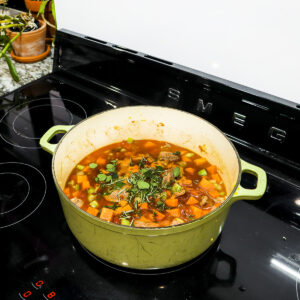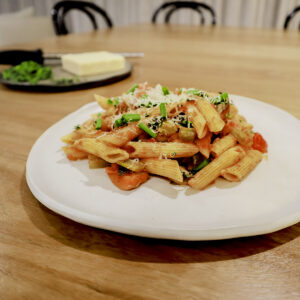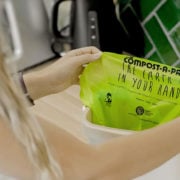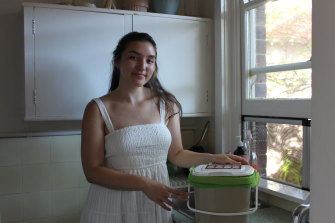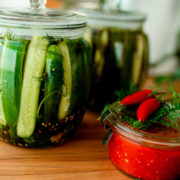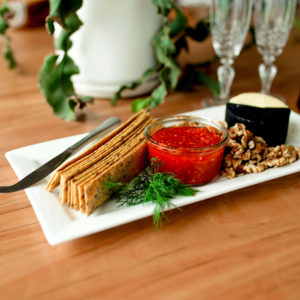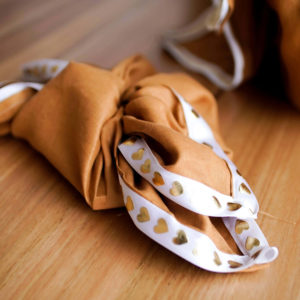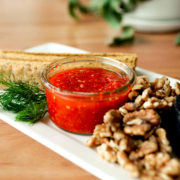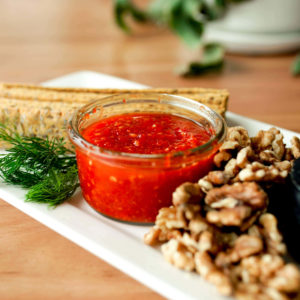Lamb Ragu
Every Sunday afternoon in winter, you will usually find me standing by the stove with my wooden spoon, large cast iron pots, and often a wine, engrossed in cooking. It’s a routine I really enjoy.
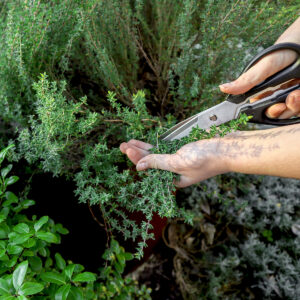 This year winter has been really busy for our family, and so our Sunday Cook Ups have been more important than usual. Being so prepared to kick off the week means even on the busiest of school nights, we can finish the day with a home cooked meal, even when it’s essentially just a re-heat! Luckily, winter cooking with soups and curries is perfect for cooking in bulk and freezing.
This year winter has been really busy for our family, and so our Sunday Cook Ups have been more important than usual. Being so prepared to kick off the week means even on the busiest of school nights, we can finish the day with a home cooked meal, even when it’s essentially just a re-heat! Luckily, winter cooking with soups and curries is perfect for cooking in bulk and freezing.
One of our favourite recipes at present, which the kids have been negotiating into our cook up nearly every week is my Lamb Ragu. It’s even more popular than spaghetti Bolognaise, and the best part, it basically cooks itself!
Ingredients
-
- 120ml Extra Virgin Olive Oil
- 2 Organic Garlic Cloves
- 2 Carrots, Finely Chopped
- 2 Celery Stalks, Finely Chopped
- 1 Onion, Finely Chopped
- 3 Bay Leaves
- 500g Boneless Lamb Shoulder, Trimmed and Cut into cubes
- 2 400g Tined Tomato
- 1 Tablespoon Fresh Garden Herbs, chopped finely (Rosemary, Thyme, Oregano)
- Freshly Grated Parmesan or Pecorino Cheese to garnish
- Shallots to garnish (optional)
- Heat the Olive Oil in a large pan over Medium Heat, and then add the Garlic, Carrots, Celery, Onion and Bay Leaves. Sauté for about 5 minutes until every thing softens. Remove this from the pan.
- Turn up the heat and brown the Lamb. Then remove this from the pan as well.
- Add a little water (Or juice from the Tinned Tomato) and boil. This will deglaze the pan and release the flavours.
- Add everything back into the pot, including the Tomato’s and Herbs. Season, mix and bring to the boil.
- Once boiling, turn the heat down to low and cover the pot. Stir regularly for approximately 2.5 hours.
I’m terrible with timing so I simply check it each time I stir. You need to make sure that nothing sticks to the bottom, and that it remains moist, so you may need to add a little water if it has evaporated and looks likely to stick, or take off the lid if you think it’s too runny. It’s ready when the meat is really tender and easily falls apart. Definitely taste – test!
If you are freezing, make sure your Ragu is quite moist. Once cooled, simply place in some glass containers and freeze.
Ragu ‘Reheat’ Dinner
- Cook pasta to the packet directions. Drain and then stir into the hot Ragu.
- Serve with Grated Cheese and a sprinkle of Herbs and Shallots.
On our busiest school nights, I get the Ragu out in the morning if frozen, and let it defrost during the day. Then simply reheat in a pan while cooking the pasta in another pan. Then simply combine, add your garnish, and dinner is ready faster than ordering in!

